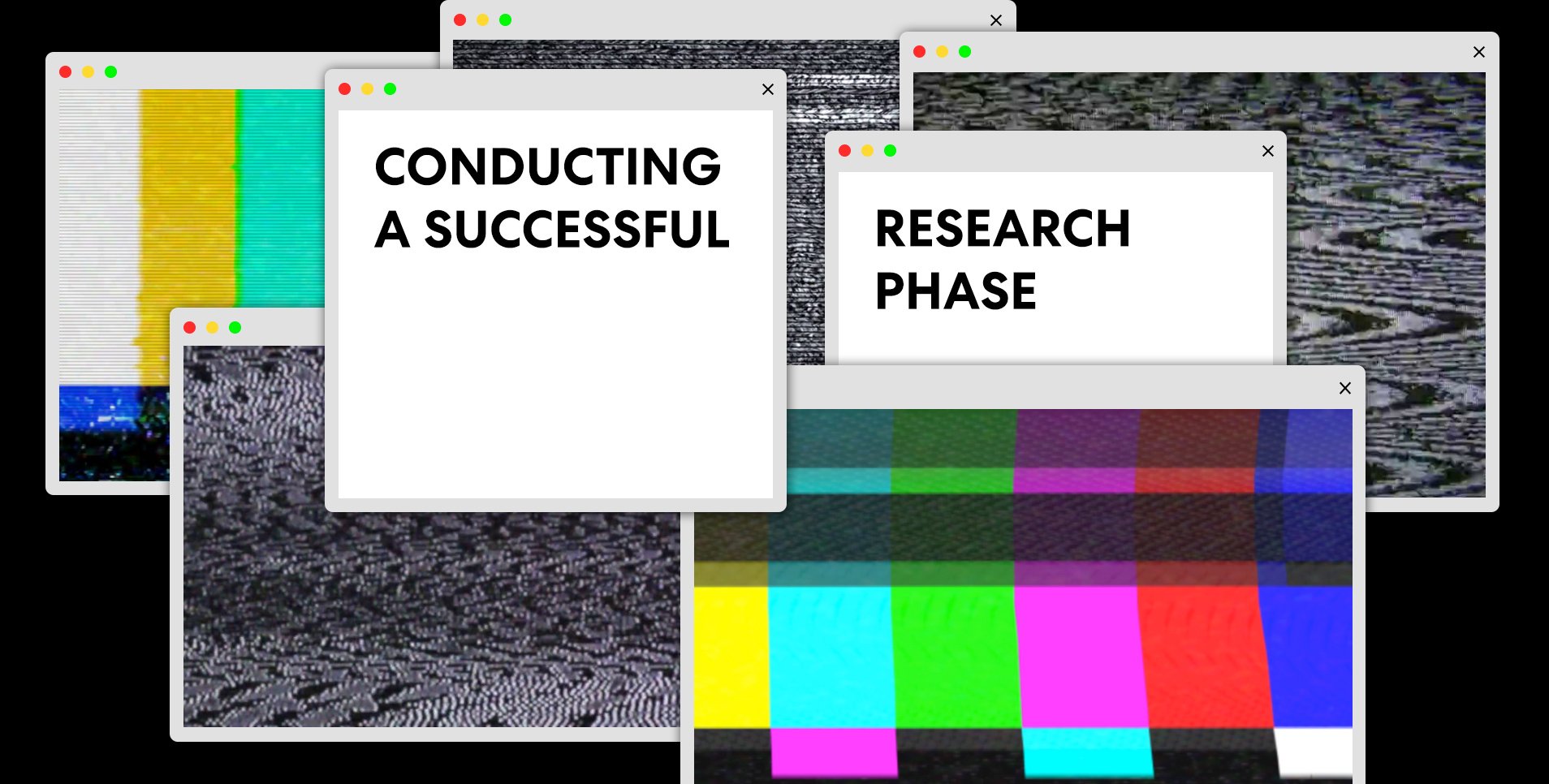© 2026 Flywheel Co.
Design — 01.24.19
Conducting A Successful Research Phase

The creative process requires a research phase. Whether you are making a dining room table, painting, or cross-stitch, a research phase is essential for thinking through the specific goals you are looking to accomplish through the creative process.
To take the dining room table example a bit farther: How many people does it need to seat? What are the final dimensions of the space? Will legs or a trestle be more effective? Thinking through these questions and answering them appropriately is required before you ever make your first cut.
In the field of graphic design, the research phase is arguably more critical because the questions being asked concern a third party, your client. You not only need to ask the right questions, you need to agree on the answers with your client before a pencil ever touches paper. Setting the appropriate boundaries for the project, understanding the goals, and agreeing on a design language will allow you to properly defend your design decisions. Ensuring that your client understands and trusts that you have the appropriate target in your sights as you begin to design will make a world of difference through the course of your work.
Every studio and individual is different, but generally speaking the research phase can be broken down into three phases:
- client focused research
- internal research
- inspiration
Client Focused Research
Some clients come to you with a three-ring binder full of internal research, questionnaires, customer reviews, and moodboards. Others come to you simply wanting "change." In either case it's your job as the designer to review their current positioning and listen carefully to the objectives they have for the future and the reasons they are requiring your services. Pay careful attention during these conversations because they are often enlightening to both parties. As the designer, you will learn more about their ambitions and personal design preferences (or taste) while the questions you ask them can help solidify their vision statement and strategy.
One of my favorite things about being a designer is that with each new client I get to learn something new and specific about another person's field of study. Whether it is a museum curator needing new interior signage or a veterinarian that needs an updated website, you get to delve into what they have dedicated their life to and what their clients expect from them.
Throughout this phase:
Don't be afraid to ask generic questions - In my experience, people like to talk about the impact their work has. It makes them feel appreciated and will build trust in your relationship.
Be enthusiastic - This opportunity to learn should excite you. Share that excitement with your client and you will be more likely to receive excitement in return when you share your work.
Consider their audience - It's important when asking questions to cover their specific design needs, but don't forget to inquire about the regular needs of their customers/clients as well.
Understand their taste - Ask them about brands they respect and products or websites they like. Explain to them what makes them effective and elaborate on how their brand might share some of these aspects.
Internal Research
Internal research begins once the client research has been solidified. With a proper understanding of the client and their expectations, you can begin to focus on the brand language that will meet these needs and position them appropriately for the future. Internal research is different than gathering inspiration. During this phase you are doing personal research into their competition and continuing to educate yourself on the needs they expressed to you in the previous phase.
This is the time when you begin to apply your expertise as a designer to their specific needs. What visual elements will help to achieve their goals? What will hinder them? A client's personal preference and taste might conflict with where they want to take their company and how they would like to be perceived. This is your opportunity to explain how to effectively navigate this conflict in a way that makes them happy with the final result.
As this phase of research comes to a close, I have found it very helpful to gather the discoveries into a "discovery document" to reference as you begin the creative process. Even better, share this document with the client and get approval that what you have discovered lines up with their mission and values. Now you know that when you start to build, you have laid an appropriate foundation.
Gathering Inspiration
Now that you have shared your findings, you can begin to look for specific inspiration that will guide your creative process. This will be different for each designer, but I can say confidently that the more you glean from the first two phases of research, the less you will rely on gathered inspiration. Nonetheless it can be helpful to pull inspiration from established brands, pieces of art, photographs, or books. If something strikes you as interesting, don't dwell on it too long, just copy it and add it to a general art-board of inspiration.
Once you have a nice collection of inspiration, review it and talk through it with other members of your team. Explain to them what you think strikes the right chord and how you plan to incorporate different elements. This process of explanation is extremely valuable — it will help you hold on to the important findings and separate the wheat from the chaff.
Now distance yourself from the inspiration. Close the file and start creating. The important visual consistencies and findings will stick with you I promise. But constantly referring to a piece of inspiration, especially if it is something taken from the finished work of another designer (e.g. Dribbble or Behance) will only lead to mundane work or an unintentional copy. The inspiration phase should be used to fuel an excitement for your own finished designs and discover unique approaches to your work, but once it has done that then leave it where it belongs — in the research phase.
Graphic Design is challenging. It takes an understanding of someone else's expertise, their expectations, and the culture around you. Do not embark on a project without first doing the appropriate research. This is just a personal framework, but I hope it helps you to experiment with your own approach to beautiful finished designs that thrill you and your clients.

